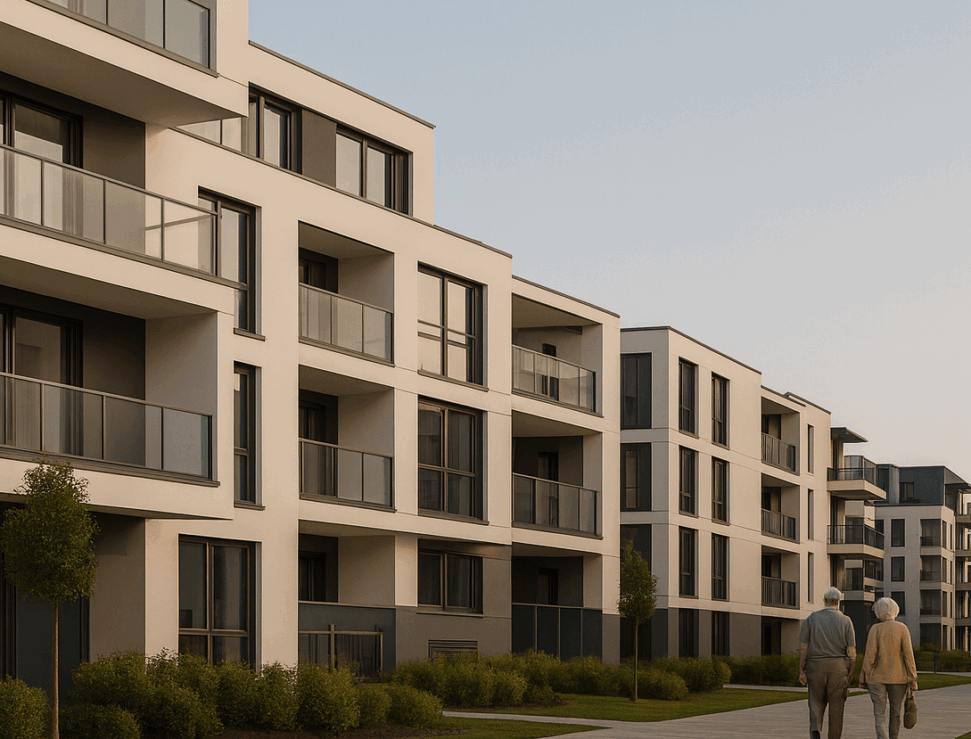The concept of co-living, a contemporary twist on communal living, is gaining traction as a solution to the mounting housing affordability crisis. This approach isn’t entirely new; it’s an evolution of older living models like boarding houses and shared accommodation that continue to be components of urban living. Now, updated to fit today’s needs and aligned with the Build-To-Rent (BTR) model, co-living is emerging as a viable response to housing market challenges, particularly in major Australian cities.
The Roots of Co-Living: A Historical Perspective
Early Incarnations: The Foundation of Shared Living
Long before the term “co-living” was coined, communal living in the form of boarding houses provided affordable housing solutions. These early models were simple and functional, offering shared spaces where residents could access essential amenities. Typically, individuals found these living arrangements through word of mouth or classified ads, creating a patchwork of informal housing options in urban areas.
The Modern Revival: Co-Living in the 21st Century
Fast forward to the late 2000s and early 2010s, co-living as we know it began to emerge, driven by skyrocketing housing costs and changing work habits. Influenced by global trends from cities like New York, London, and Berlin, co-living spaces also began to sprout in Australia. These modern co-living spaces offered private rooms or apartments within a shared building, featuring communal kitchens, living areas, and sometimes even co-working spaces. This evolution allowed residents to maintain privacy while enjoying the benefits of a connected community.
Current Trends and Appeal: Why Co-Living Works Today
Flexibility and Affordability: Meeting Modern Demands
The appeal of co-living lies in its flexibility and cost-effectiveness. In a world where job locations can change rapidly and long-term commitments are less appealing, co-living offers an attractive alternative. Tenure options range from short stays to more extended arrangements, making it a perfect fit for students, young professionals, digital nomads, and even older adults looking for simplicity. The all-inclusive pricing model, which often covers rent, utilities and internet, adds to its appeal by simplifying financial planning.
Building Communities: The Heart of Co-Living
At its core, co-living is about community. Many co-living spaces go beyond just providing a place to live; they actively foster connections among residents. Organised social events, workshops, and communal activities are organised every day, creating a sense of belonging and engagement. This community focus not only combats potential for isolation often associated with urban living but also builds a supportive network for residents.
Co-Living vs. Build-to-Rent: Complementary Yet Distinct
While co-living and Build-to-Rent (BTR) both offer innovative housing solutions, they serve different segments of the market. Understanding their distinctions is key to appreciating how each model contributes to the broader housing ecosystem.
Target Market: Different Needs, Different Solutions
- Co-Living: Targets younger, mobile residents such as students, young professionals, and digital nomads. These individuals value community, flexibility, and affordability. Co-living living spaces are often fully furnished with communal facilities focusing on social interaction and shared experiences.
- BTR: Appeals to a broader demographic, including singles, couples, families, and retirees. BTR developments offer a more traditional rental experience with self-contained living units, focusing on long-term stability. Amenities like gyms and lounges are standard, but there’s less emphasis on communal living activities.
Accommodation and Amenities: Tailored Living Spaces
- Co-Living: Typically features compact, efficient living spaces paired with shared common areas. The design maximises communal experiences while providing private sleeping quarters, creating a balance between privacy and social interaction.
- BTR: Offers larger, self-contained units, ranging from studios to multi-bedroom apartments. These spaces may be furnished or unfurnished depending on the tenant’s needs. BTR units are designed for individual living, with amenities aimed at enhancing personal comfort.
Flexibility and Tenure: Adaptable vs. Stable Living
- Co-Living: Known for its highly flexible lease terms, including options for short-term stays and month-to-month agreements. This model is ideal for individuals who need flexibility, such as those who frequently relocate for work or travel.
- BTR: Generally offers standard lease terms, typically ranging from 6 to 24 months. This model appeals to those seeking long-term stability, making it a good choice for individuals or families looking for more permanent residence.
Cost Structure: Simplified vs. Variable Expenses
- Co-Living: Rent usually covers utilities, internet, and access to communal spaces, providing an all-inclusive, predictable expense. This transparency in costs makes it easier for residents to manage their finances without unexpected bills.
- BTR: Rent typically covers the cost of the unit and access to amenities, with utilities and other services billed separately. This can lead to variability in total living costs, depending on the tenant’s usage and lifestyle.
Operational Models in Co-Living: Diverse Approaches to Management
Co-living operates under various models, each offering different experiences and management styles:
Owner-Operator: Comprehensive Management
In the owner-operator model, the co-living company owns and operates the property. This model allows for a cohesive management approach, with the company handling everything from tenant relations to community activities. It’s a streamlined operation where the brand’s identity and values are consistently upheld across the property.
Lease or Management Agreement: Flexible Operations
Under a lease or management agreement, the co-living company leases the property from the owner or operates it under a management contract. This model provides flexibility for both the property owner and the co-living operator, allowing them to focus on their strengths—property ownership and community management, respectively.
Franchise Model: Expanding the Brand
The franchise model allows co-living companies to expand their brand through franchisees. Franchisees manage the co-living spaces under the central brand, receiving support in operations, branding, and marketing. This model is ideal for scaling the co-living concept across multiple locations while maintaining brand consistency.
Membership-Basis: Mobility and Flexibility
In a membership-based model, residents pay a membership fee that grants them access to multiple co-living spaces across different locations. This model is particularly appealing to digital nomads and frequent travellers, offering high mobility and flexibility within the operator’s network.
Co-Living as a Forward-Looking Solution
Co-living represents a return to communal living but with a modern, contemporary twist that meets today’s urban challenges. It addresses the housing affordability crisis by offering flexible, affordable, and community-oriented living solutions. While distinct from the Build-to-Rent model, co-living is a complementary typology catering to different segments of the market. Together, they provide diverse and innovative solutions to the ongoing housing challenges faced by many Australian cities.
In essence, co-living is a “back to the future” approach, modernising the concept of communal living to solve today’s housing problems. By offering tailored solutions for a wide range of housing needs and preferences, co-living enriches the urban living experience, making it a vital component of the modern housing ecosystem.





